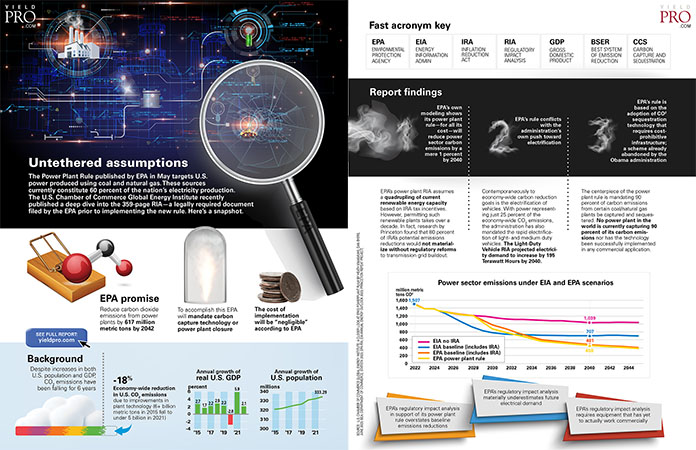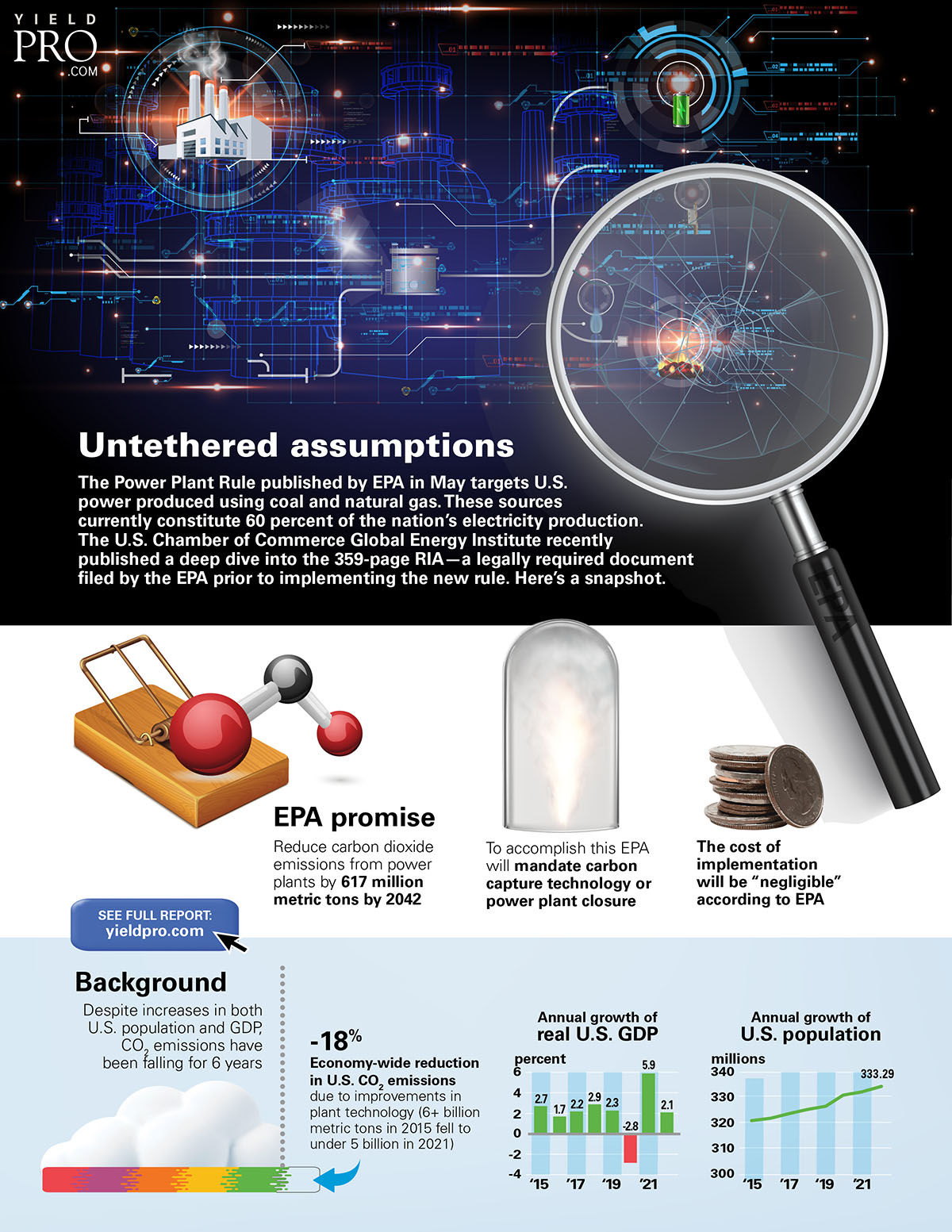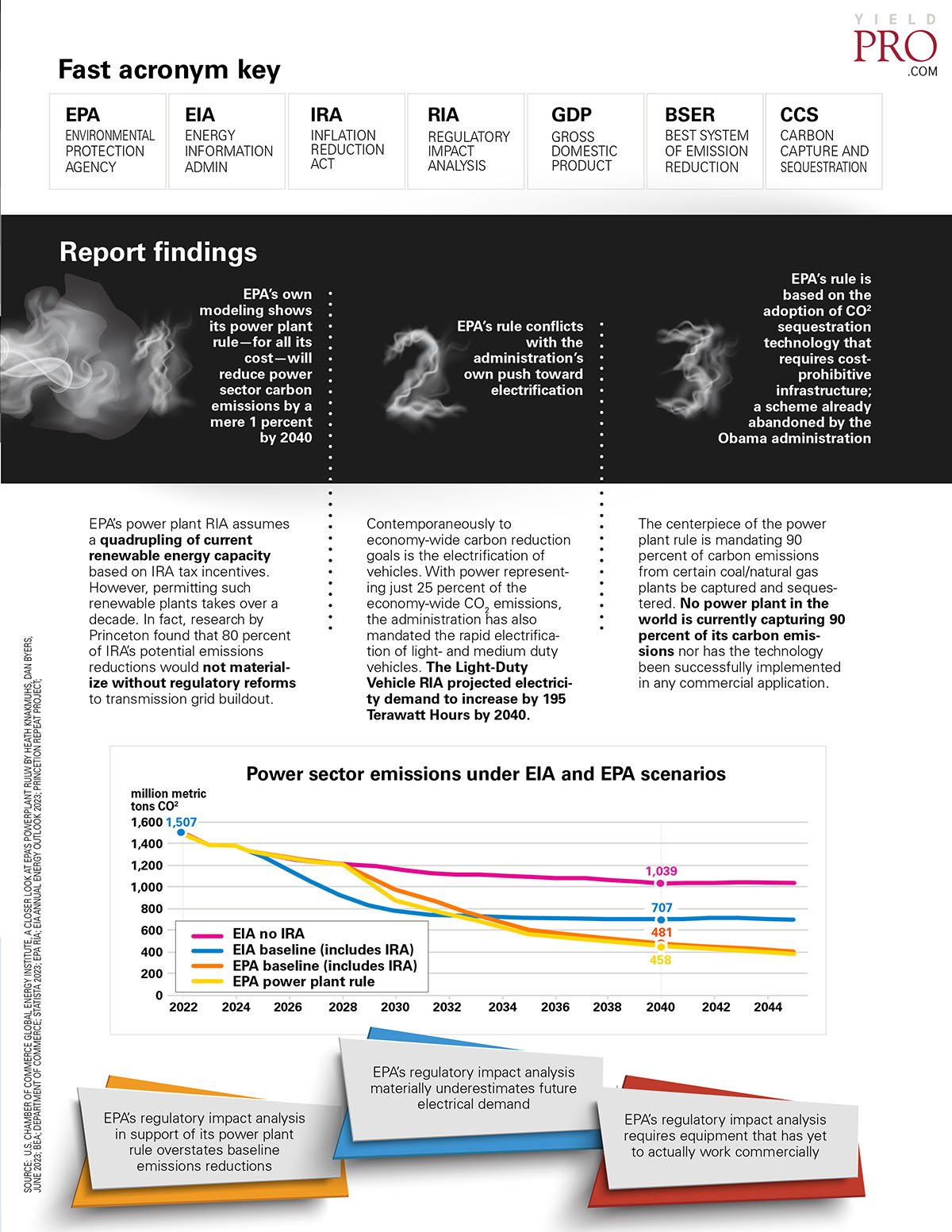The Power Plant Rule published by EPA in May targets U.S. power produced using coal and natural gas. These sources currently constitute 60 percent of the nation’s electricity production. The U.S. Chamber of Commerce Global Energy Institute recently published a deep dive into the 359-page RIA—a legally required document filed by the EPA prior to implementing the new rule. Here’s a snapshot.
EPA promise
- Reduce carbon dioxide emissions from power plants by 617 million metric tons by 2042
- To accomplish this EPA will mandate carbon capture technology or power plant closure
- The cost of implementation will be “negligible” according to EPA
Background
Despite increases in both U.S. population and GDP, CO2 emissions have been falling for 6 years
-18% Economy-wide reduction in U.S. CO2 emissions due to improvements in plant technology (6+ billion metric tons in 2015 fell to under 5 billion in 2021)
Fast acronym key
- EPA: Environmental Protection Agency
- EIA: Energy Information Admin
- IRA: Inflation Reduction Act
- RIA: Regulatory Impact Analysis
- GDP: Gross Domestic Product
- BSER: Best System of Emission Reduction
- CCS: Carbon Capture and Sequestration
Report findings
- EPA’s own modeling shows its power plant rule—for all its cost—will reduce power sector carbon emissions by a mere 1 percent by 2040
- EPA’s rule conflicts with the administration’s own push toward electrification
- EPA’s rule is based on the adoption of CO2 sequestration technology that requires cost-prohibitive infrastructure; a scheme already abandoned by the Obama administration
EPA’s power plant RIA assumes a quadrupling of current renewable energy capacity based on IRA tax incentives. However, permitting such renewable plants takes over a decade. In fact, research by Princeton found that 80 percent of IRA’s potential emissions reductions would not materialize without regulatory reforms to transmission grid buildout.
Contemporaneously to economy-wide carbon reduction goals is the electrification of vehicles. With power representing just 25 percent of the economy-wide CO2 emissions, the administration has also mandated the rapid electrification of light- and medium duty vehicles. The Light-Duty Vehicle RIA projected electricity demand to increase by 195 Terawatt Hours by 2040.
The centerpiece of the power plant rule is mandating 90 percent of carbon emissions from certain coal/natural gas plants be captured and sequestered. No power plant in the world is currently capturing 90 percent of its carbon emissions nor has the technology been successfully implemented in any commercial application.
Power sector emissions under EIA and EPA scenarios
- EPA’s regulatory impact analysis in support of its power plant rule overstates baseline emissions reductions
- EPA’s regulatory impact analysis materially underestimates future electrical demand
- EPA’s regulatory impact analysis requires equipment that has yet to actually work commercially
















